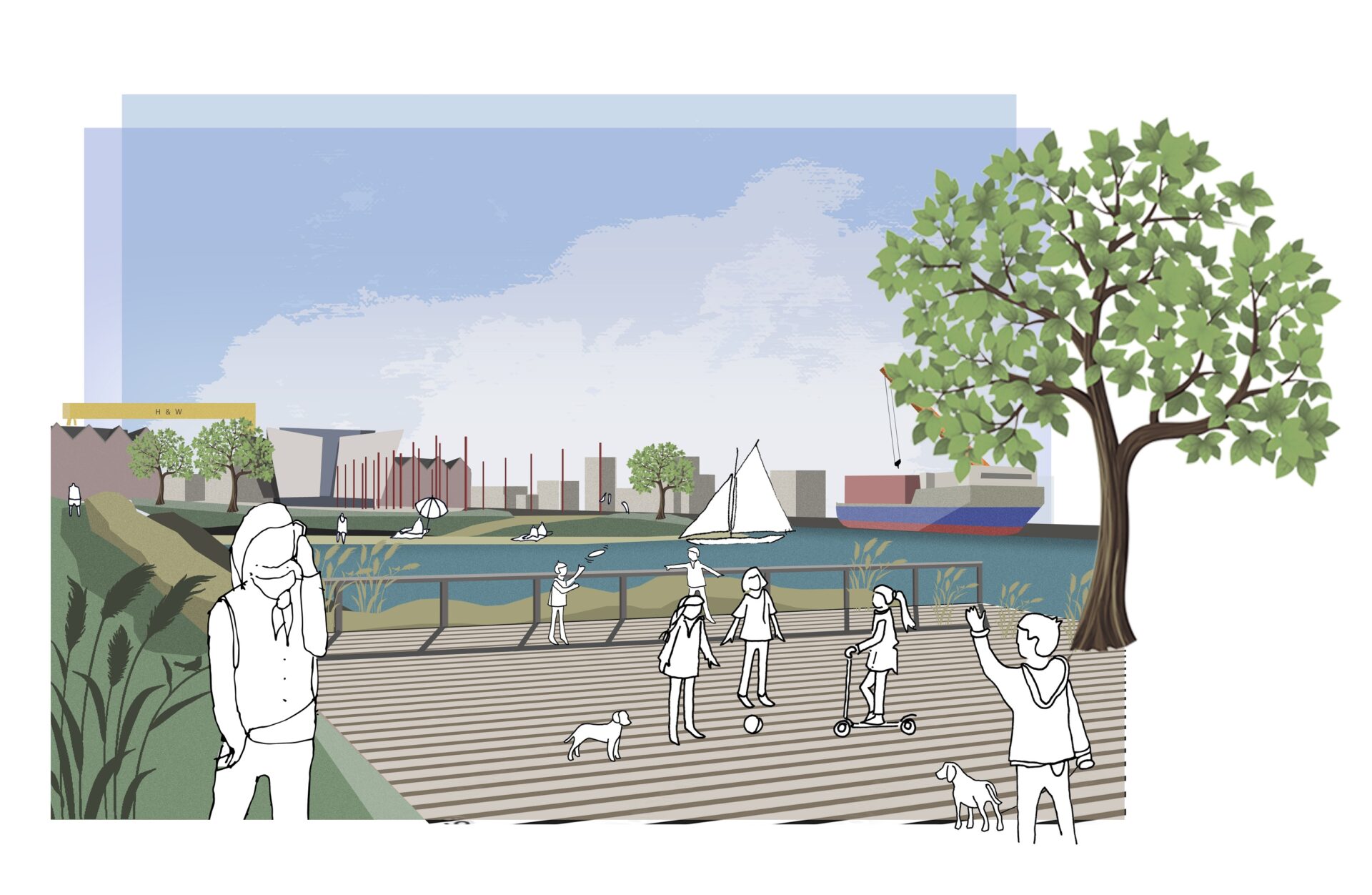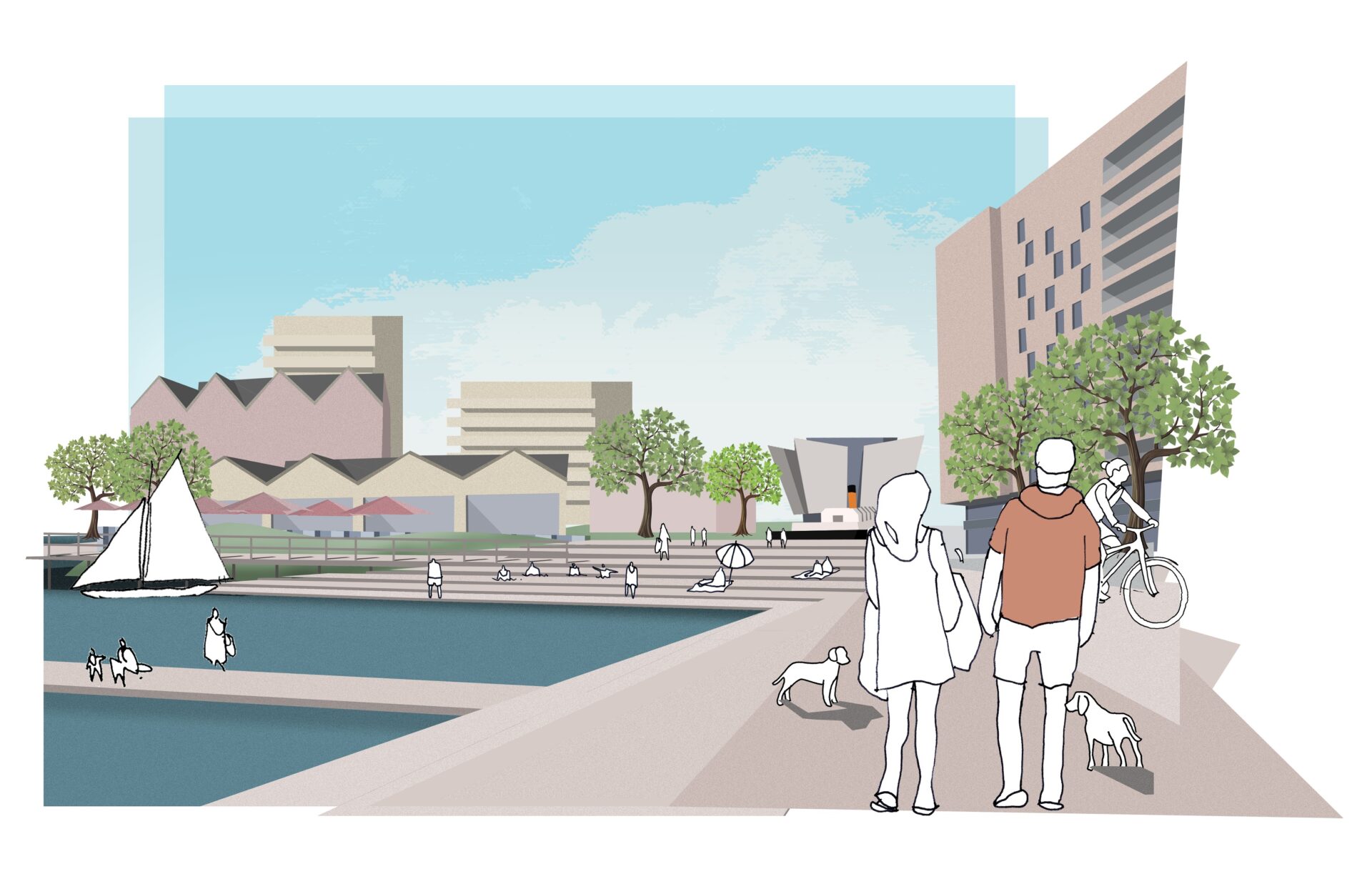Waterfront Task Group
One of Belfast’s key strengths is that it is a waterfront city. The expanding waterfront area and it’s commercial, residential, tourism and leisure developments will play a key role in fulfilling the city’s aspirations for economic growth, quality city living experiences, sustainable transport, connectivity, and wellbeing. This has been recognised in Belfast’s Bolder Vision document, which highlights ‘Embracing the River Lagan and Waterfront’ as one of four key moves.
In response to Belfast’s Bolder Vision document, a Belfast Waterfront Task Group has been established to scope how the waterfront can fully realise its potential as a connected, vibrant corridor linking to and with key destinations, neighbourhood communities and city centre. A key requirement is an agreed place-making Framework for the city’s waterfront promenade. Currently the area falls under the responsibility of several landowners and developers, including Belfast Harbour, Titanic Quarter and Department for Communities, working to different masterplans and timescales.

The Waterfront Task Group includes Maritime Belfast Trust, Belfast City Council, Belfast Harbour, Titanic Quarter Limited, Department for Communities, Department for Infrastructure, Department for Economy, Department for Agriculture, Environment and Rural Affairs, Tourism NI and Innovation Belfast. The Task Group is chaired by the Chief Executive of Belfast City Council.
Waterfront Promenade Framework

Following a tender exercise, Maritime Belfast appointed Schulze + Grassov, an urban design agency from Copenhagen to develop a strategic framework which focuses on enabling a promenade along the waterfront on both sides and across the water, that encourages usage by local residents and visitors alike, engendering vibrancy and vitality. S+G assembled a multidisciplinary team consisting of civil engineers Civic and socio- economists HATCH to look in detail at the Belfast waterfront area. They carried out site visits, held stakeholder engagement workshops and meetings, and completed a deep dive into all the masterplans, strategies and reports on both Belfast and our waterfront area.
Maritime Belfast also carried out community surveys online and held workshops in person asking hundreds of local people about what they liked or wanted to see on the waterfront. The top five improvements focused on more places to eat, more green areas and public toilets, walking and cycling trails, and more quality events.
Embracing the Belfast Waterfront
For the Schulze + Grassov team the unique challenges and opportunities presented by Belfast has been a key consideration, as well as the sheer scale of our waterfront area. Stretching from Sailortown to the Ormeau Park, Belfast has around 10,000m of waterfront. The framework, launched in December 2023, is a generational opportunity to reshape Belfast’s relationship with its waterfront and maximise the area’s potential to provide economic and social benefits for all of Northern Ireland.
The Schulze + Grassov framework, ‘Embracing the Belfast waterfront,’ looks at interventions based on whether those areas are urban with a hard shoreline and higher building density, maritime – with interest specific attractions and a mix of hard and soft shoreline, or whether they are natural with a soft shoreline and recreation attractions.
The framework contains practical design guidance and a toolkit of development options to help balance community, nature, and development. There are plans for new pedestrian and cycle bridges across the Victoria Channel, as well as new public spaces, playgrounds, heritage trails, floating boardwalks, businesses and wetlands, moorings and cantilevered decking.
By adopting an integrated approach, the Waterfront Promenade aims to improve the area’s links to the rest of the city, enrich marine habitats and provide a focal point for leisure, employment, cycling, walking and tourism. Overall, the vision is to create a stand-out international destination that improves quality of life for residents and showcases Northern Ireland to investors and visitors alike.
The Task Group is working towards establishing the Waterfront Promenade as a Local Policy Area so that its design guidelines are adopted by planning authorities. Plans are also underway to create a pilot Waterfront Design Panel with expert voices to peer review proposals along the Promenade against guidelines and surrounding context.
Read ‘Embracing the Belfast Waterfront’
Videos






Have your say
The Waterfront Promenade Framework is on ongoing process and we want to hear your views.